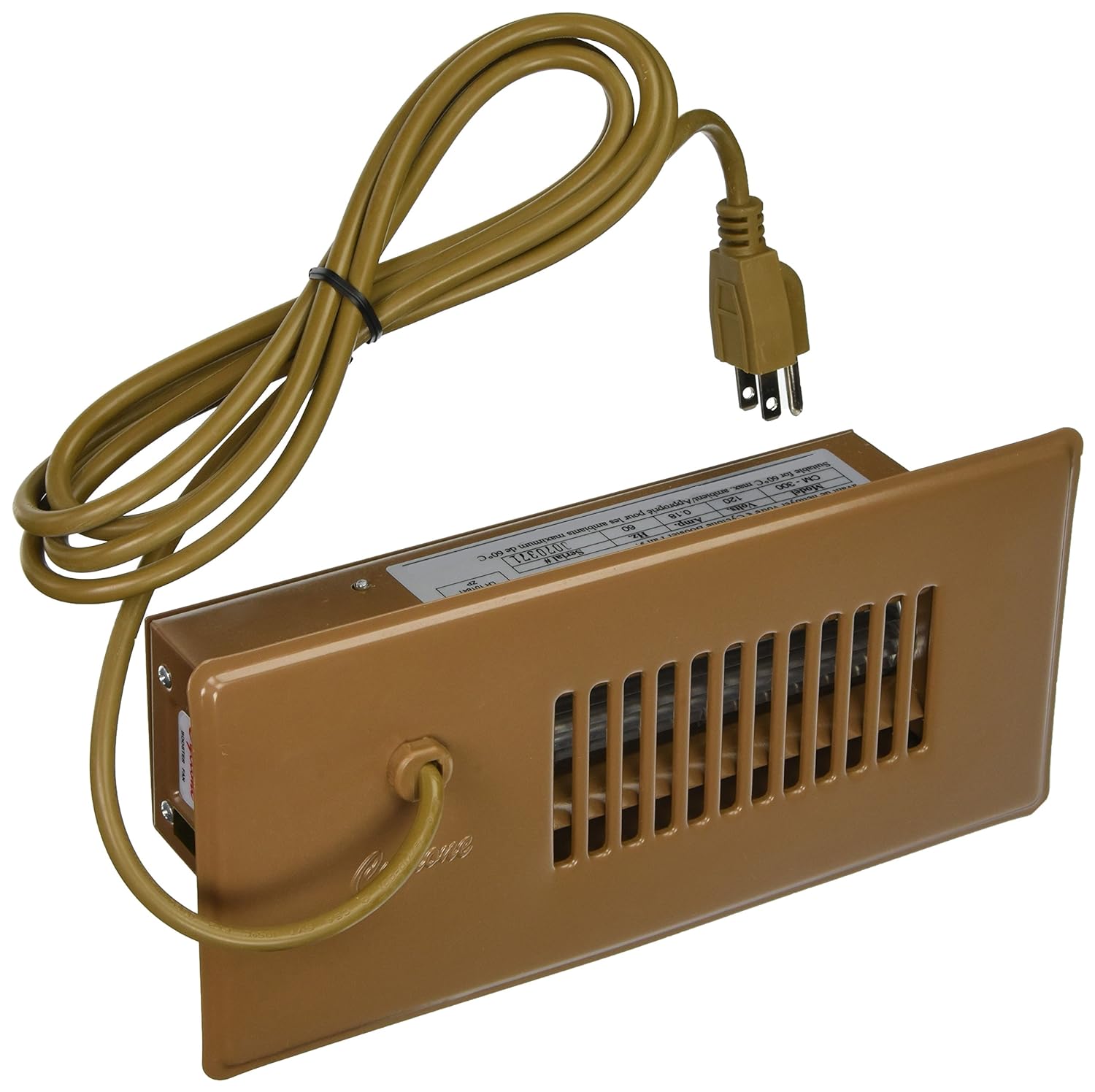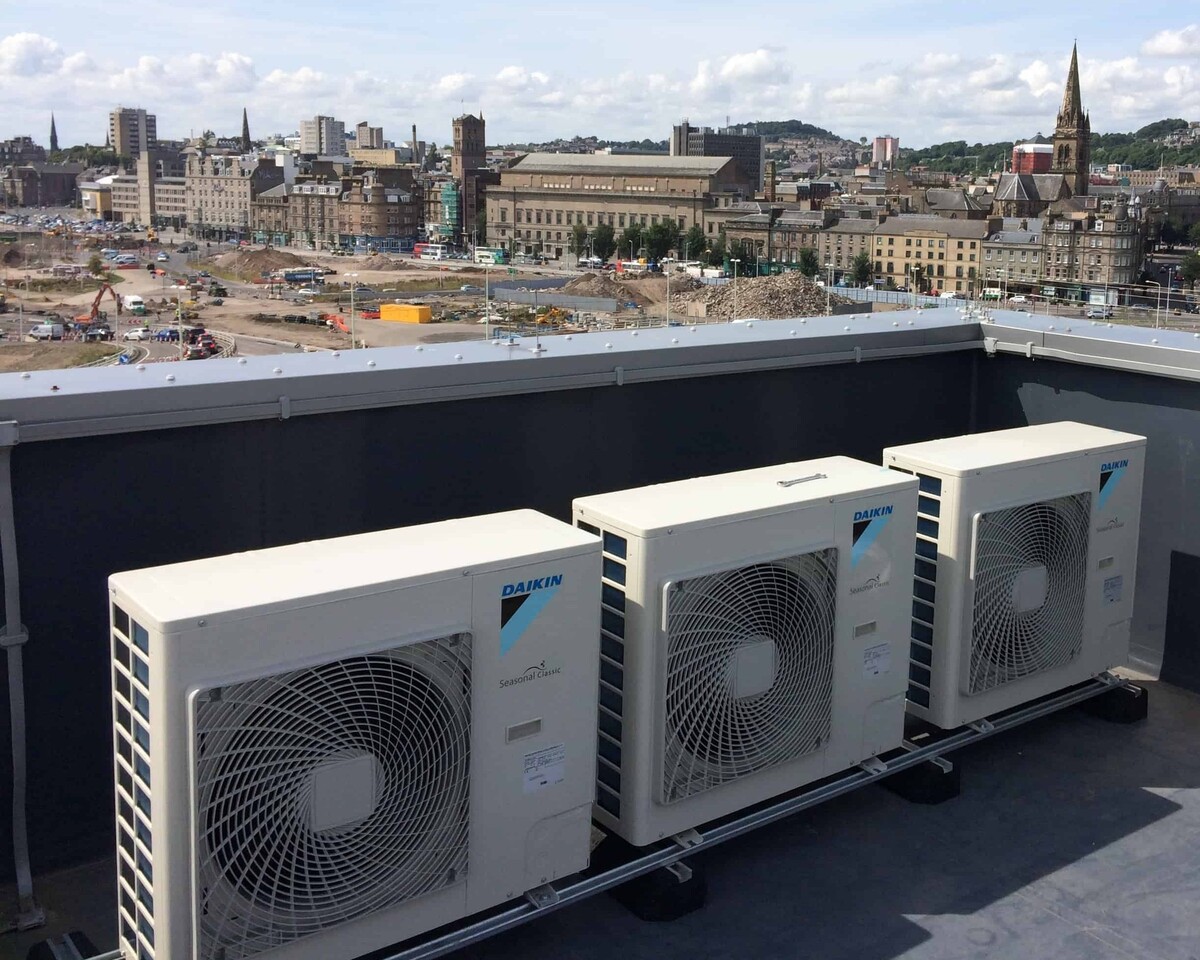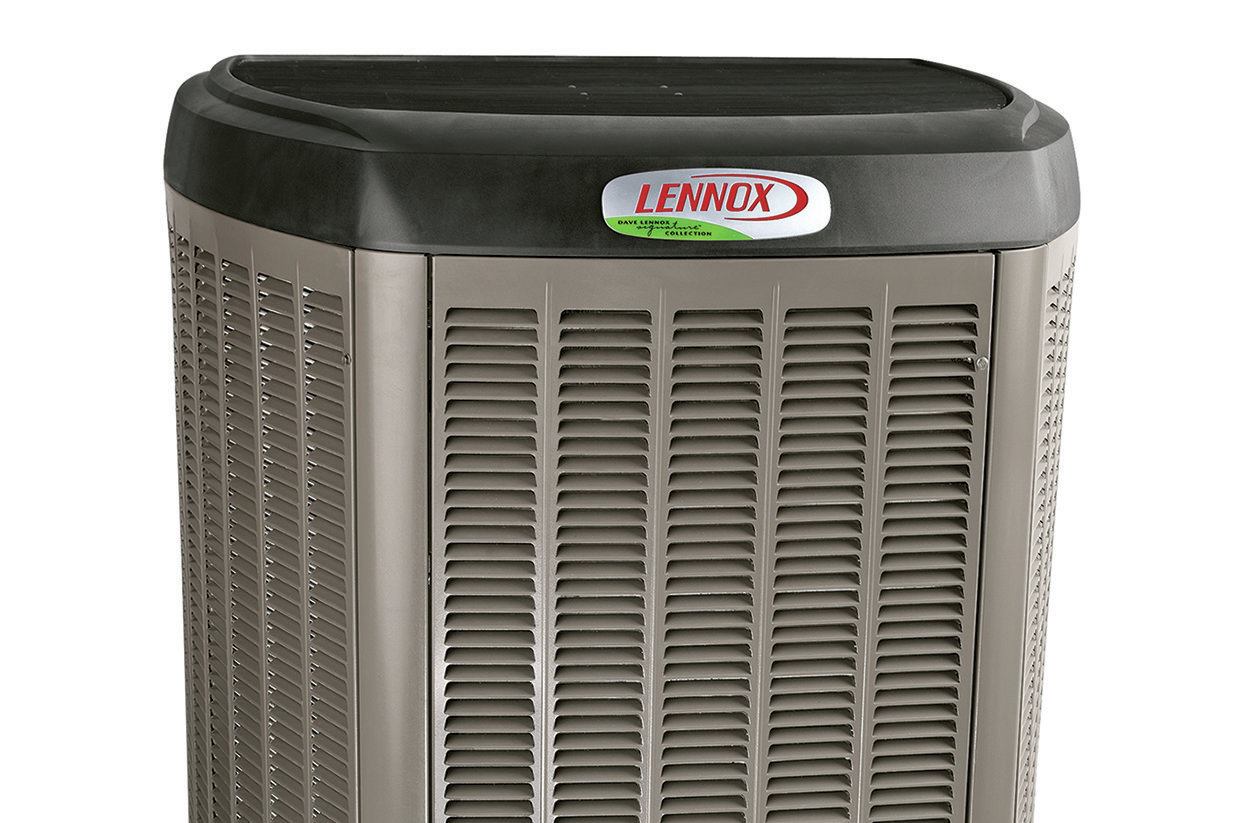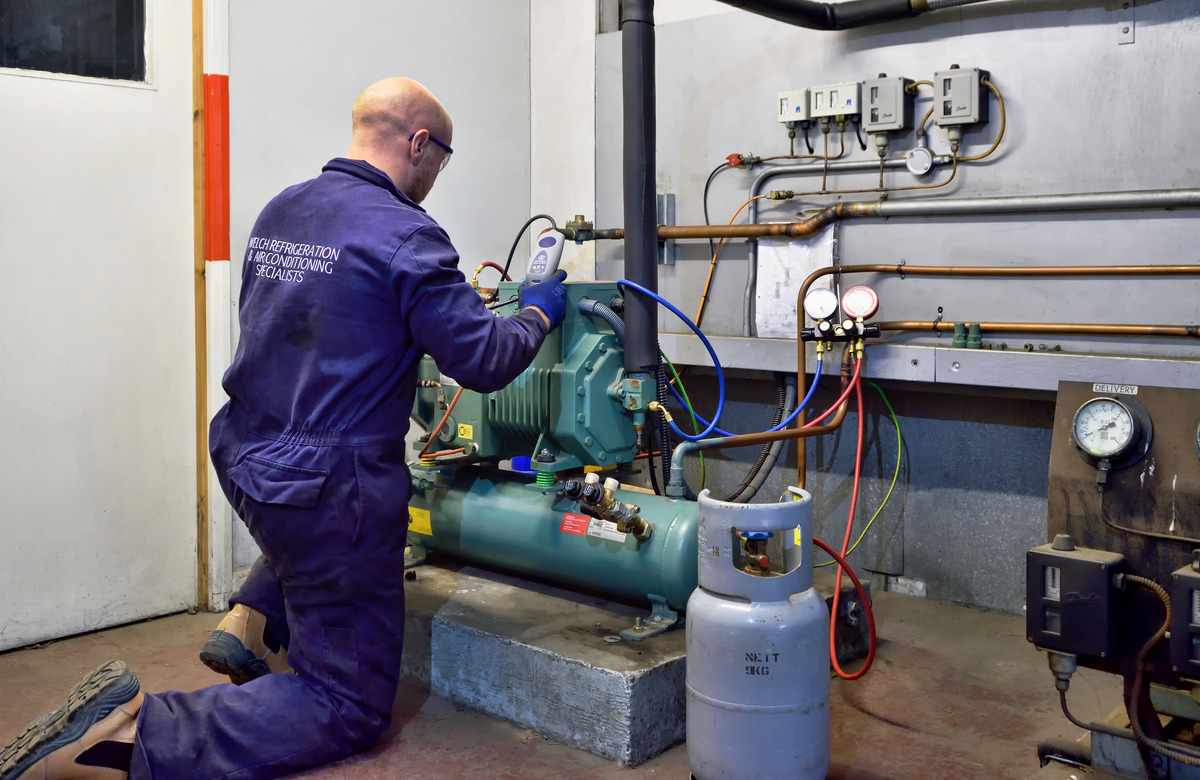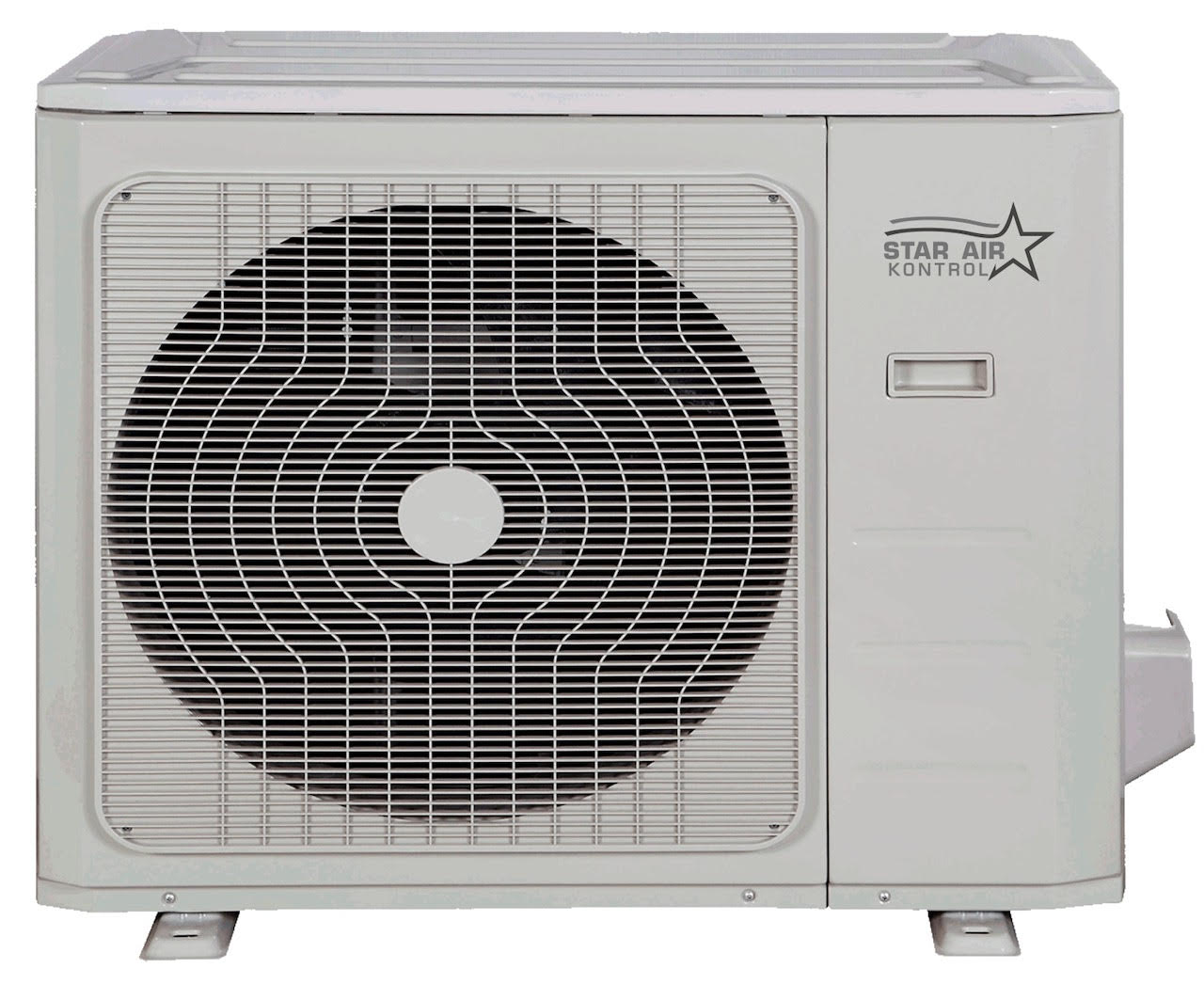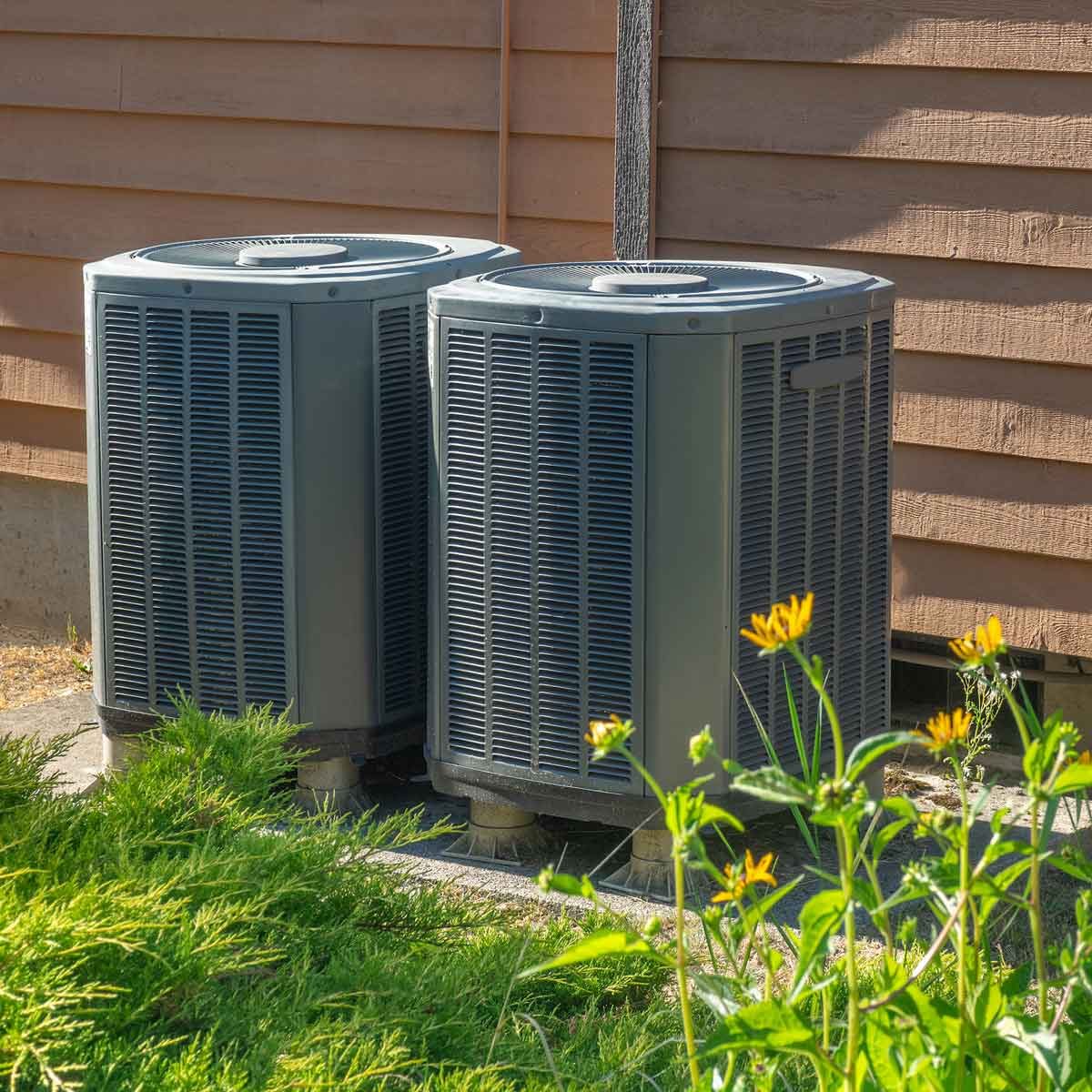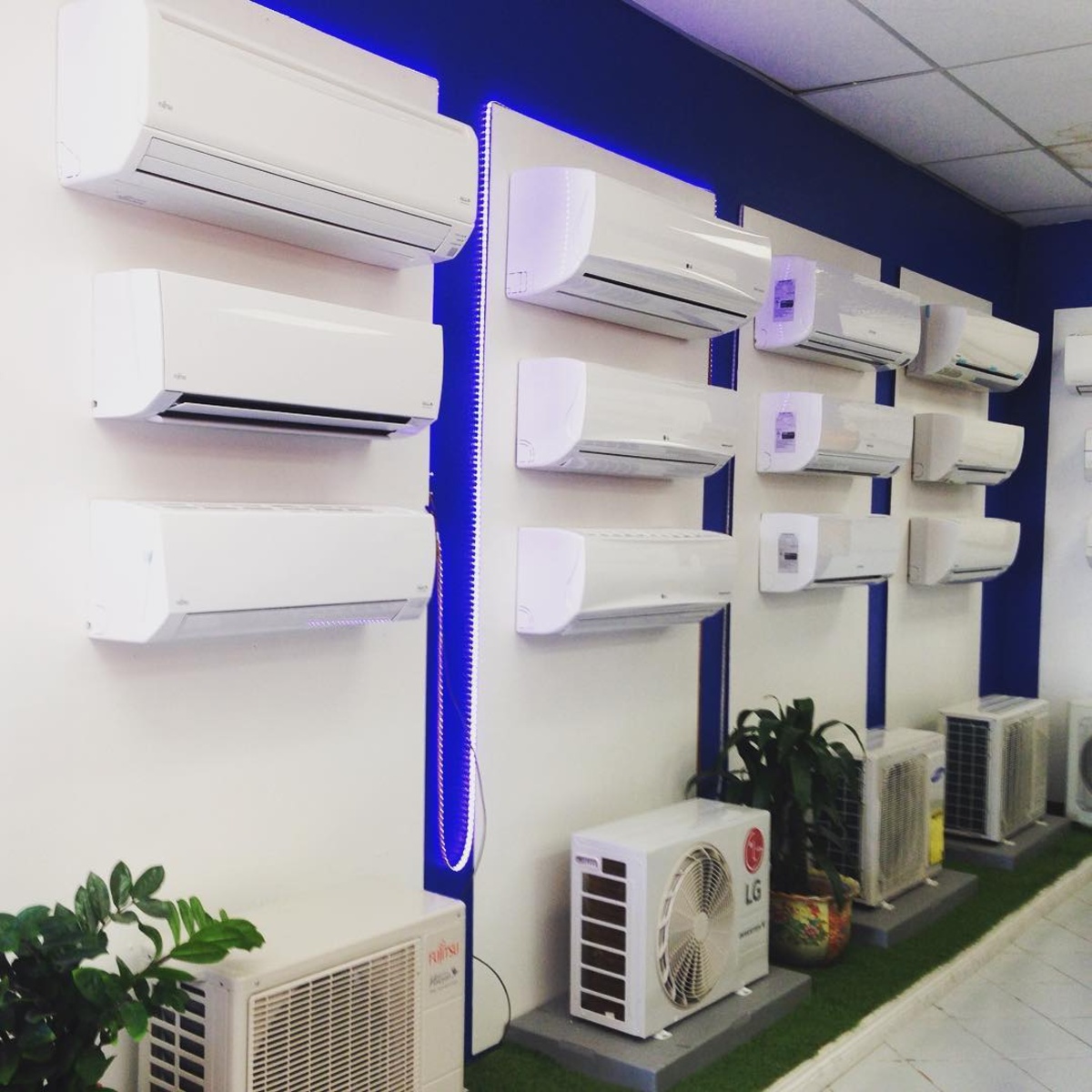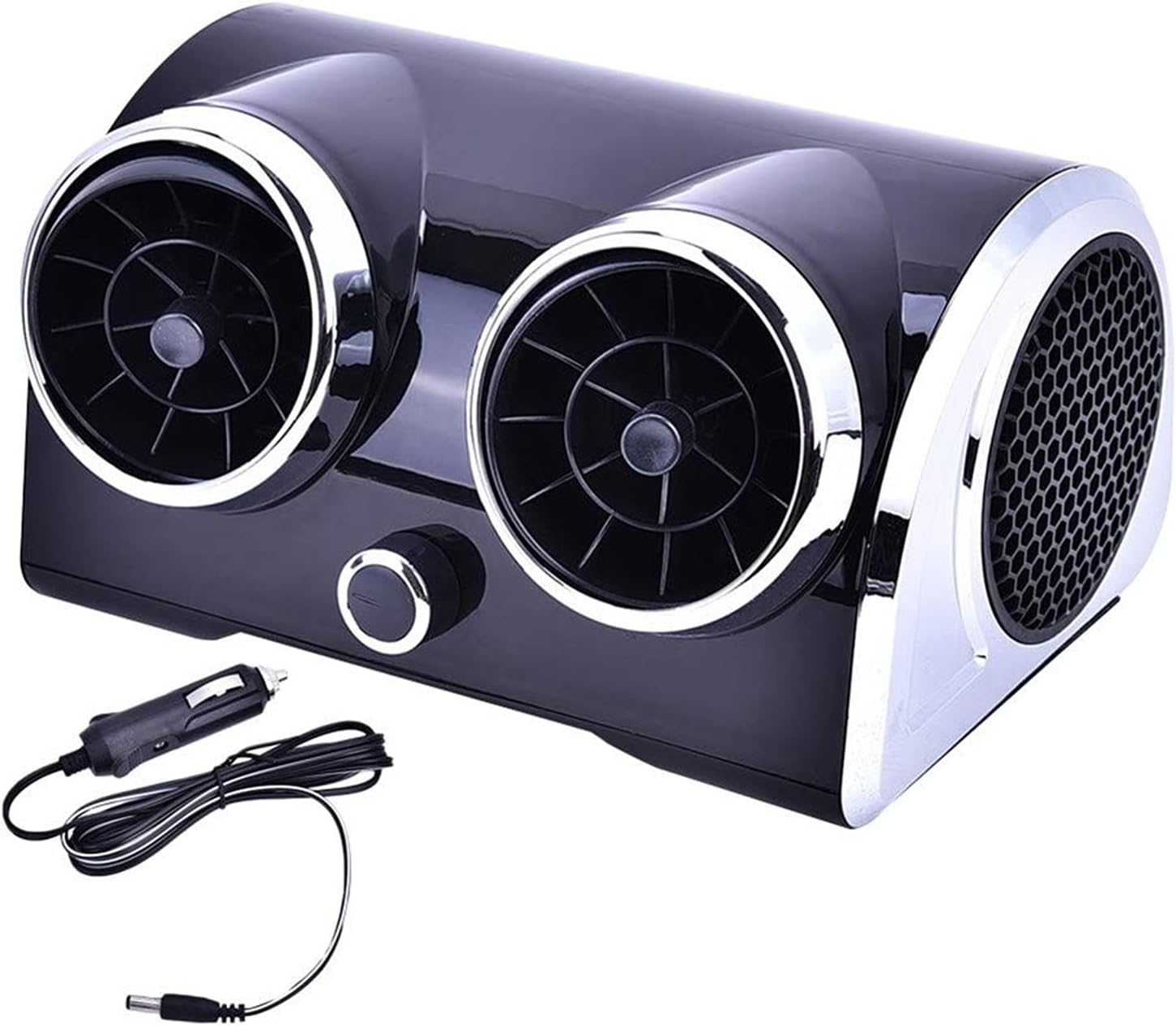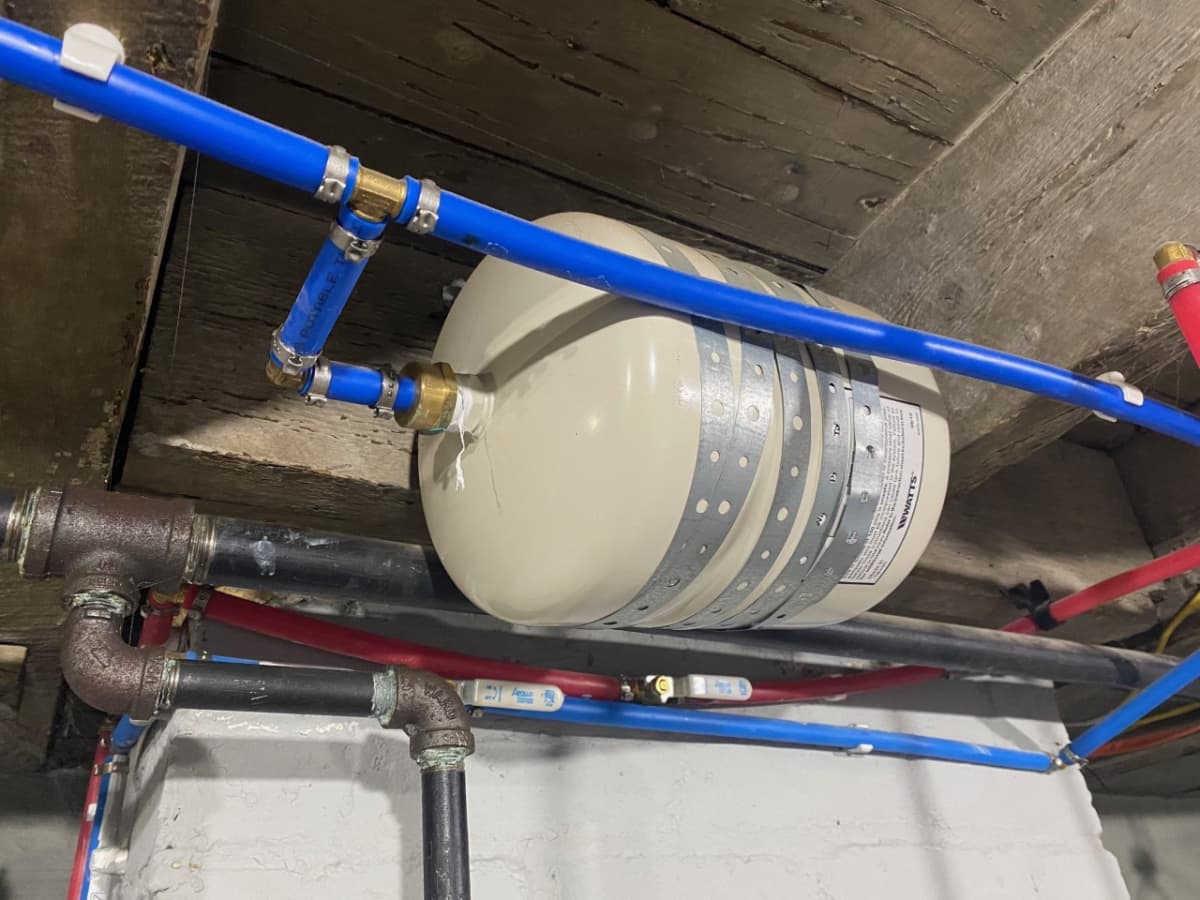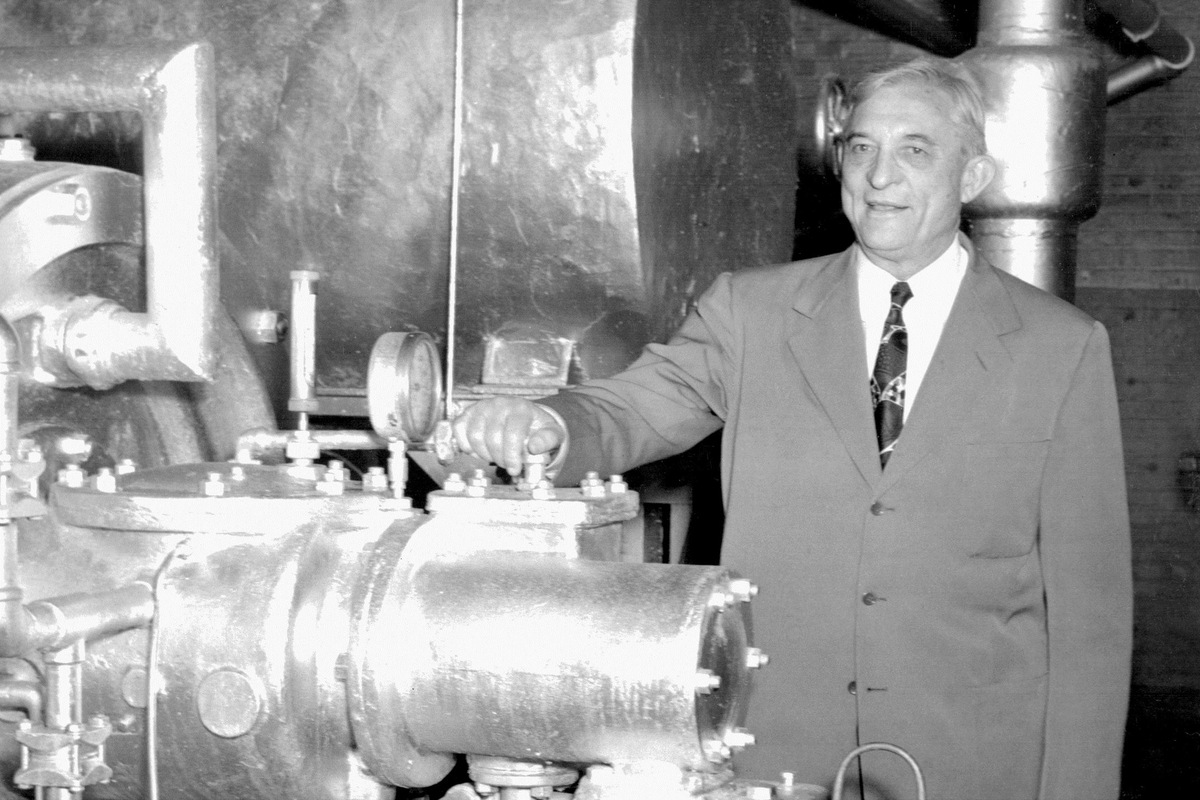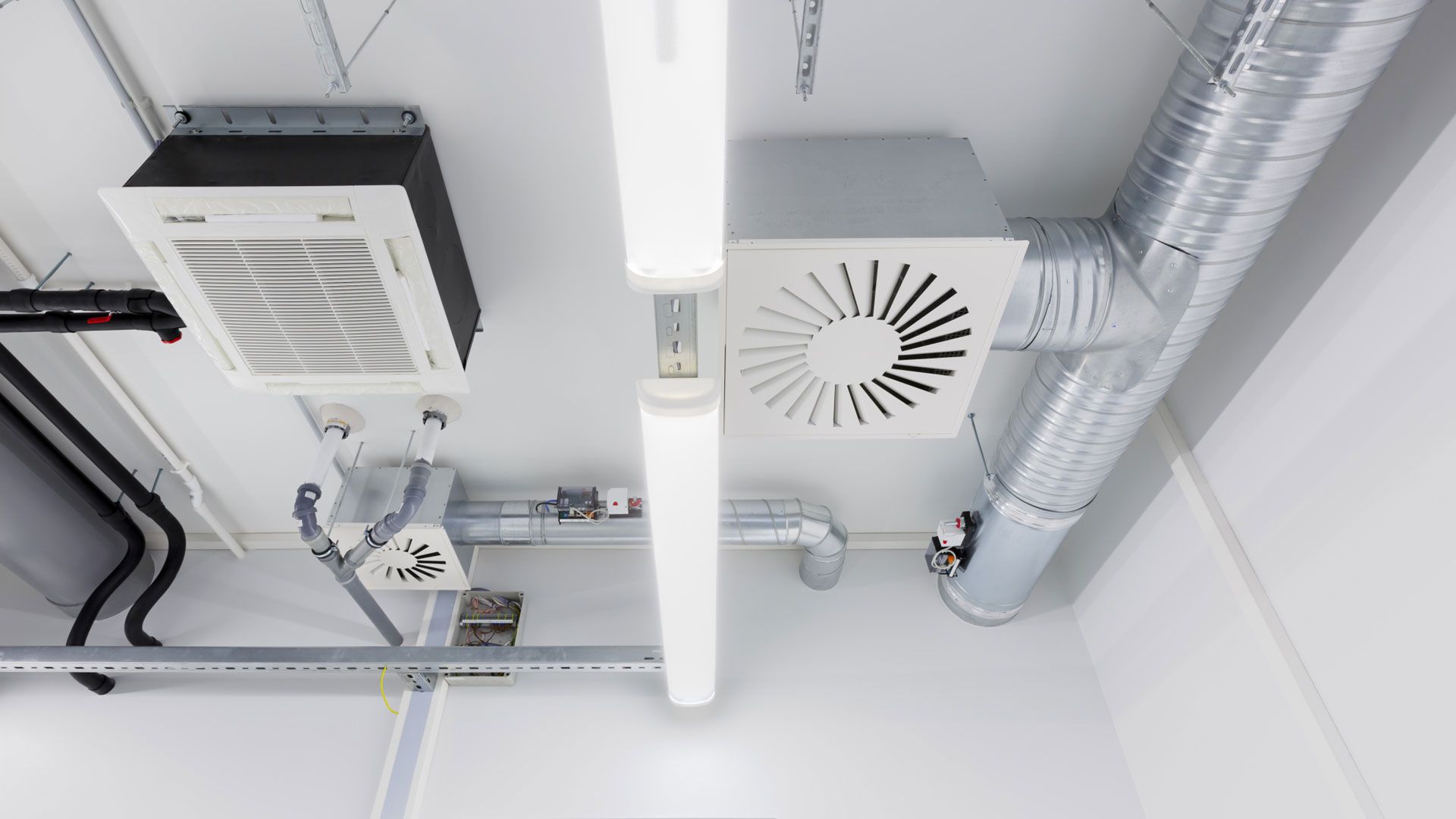Home>Home Maintenance>What Is An Expansion Valve In Air Conditioning
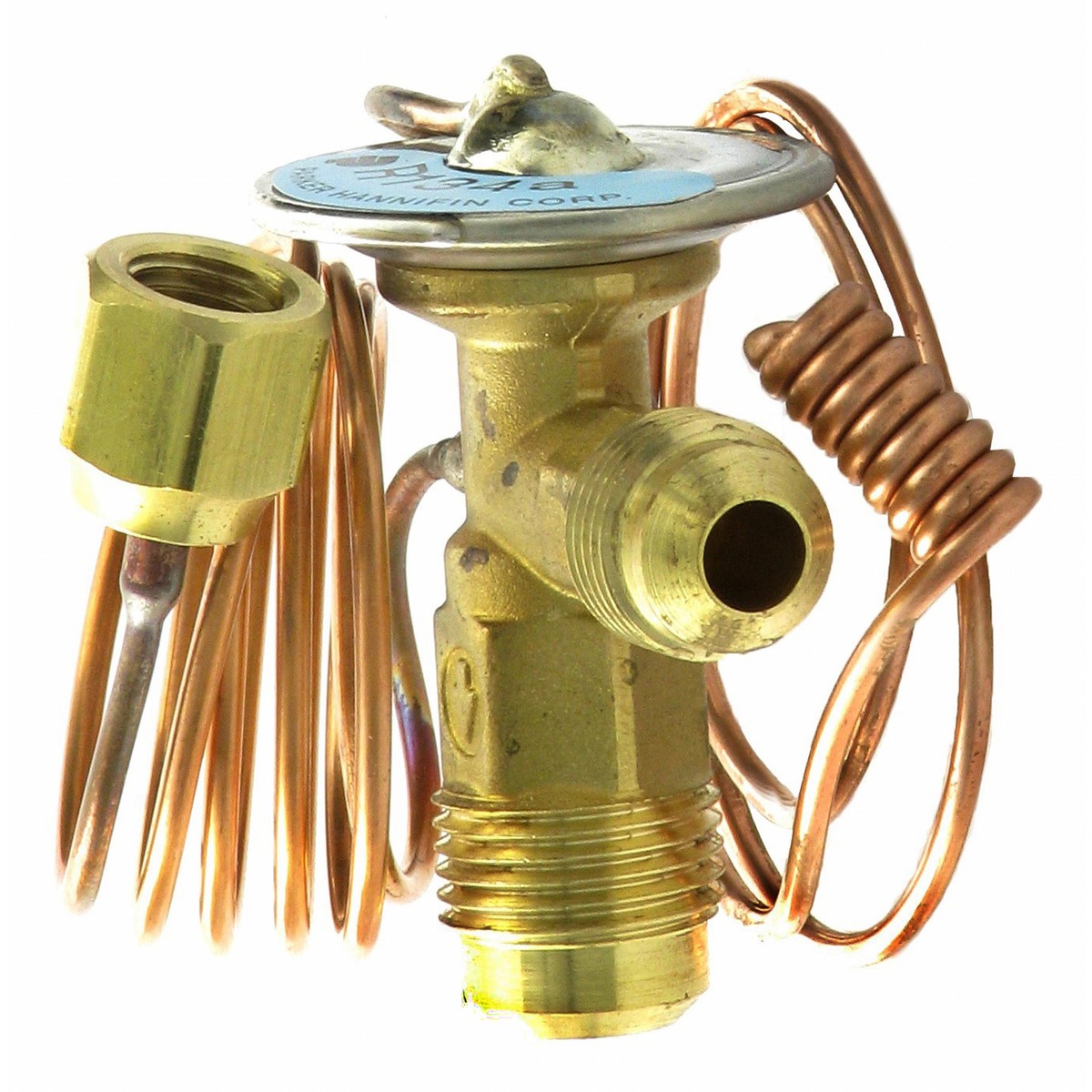

Home Maintenance
What Is An Expansion Valve In Air Conditioning
Modified: March 6, 2024
Find out what an expansion valve is in air conditioning and how it contributes to efficient home maintenance. Learn about its role in regulating refrigerant flow.
(Many of the links in this article redirect to a specific reviewed product. Your purchase of these products through affiliate links helps to generate commission for Storables.com, at no extra cost. Learn more)
Introduction
Welcome to the world of air conditioning! Whether you’re enjoying a comfortable climate in your home, office, or car, you have an expansion valve to thank for that cool air. The expansion valve plays a crucial role in regulating the flow of refrigerant and ensuring optimal cooling performance. In this article, we’ll explore what an expansion valve is, how it works, and the importance of proper maintenance.
As the name suggests, an expansion valve is responsible for controlling the expansion of refrigerant in the air conditioning system. It acts as a gateway, allowing the high-pressure liquid refrigerant to transition into a low-pressure mixture of liquid and gas in the evaporator coil. This process is crucial for cooling the surrounding air and maintaining a comfortable indoor temperature.
Expanding the refrigerant is necessary because it enables the refrigerant to absorb the heat from the surrounding air. When the warm air passes over the evaporator coil, the refrigerant absorbs the heat and cools the air. This cooled air is then distributed throughout the space, providing relief from the scorching summer heat.
Now that we understand the fundamental role of an expansion valve, let’s dive deeper into its function and various types available in air conditioning systems.
Key Takeaways:
- The expansion valve in air conditioning systems controls the flow of refrigerant, enabling efficient cooling by absorbing heat from the air. Regular maintenance is crucial to prevent issues and ensure optimal performance.
- Different types of expansion valves, such as thermostatic and electronic, serve specific purposes in air conditioning systems. Proper operation and maintenance are essential for efficient cooling and system longevity.
Read more: What Is A Toilet Fill Valve
Function of an Expansion Valve in Air Conditioning
The primary function of an expansion valve in an air conditioning system is to regulate the flow of refrigerant. It ensures that the refrigerant enters the evaporator coil in a controlled and precise manner. This process is essential for achieving efficient cooling and maintaining the desired indoor temperature.
When the expansion valve receives a signal from the thermostat, it opens or closes a small valve located within it. This valve allows a specific amount of high-pressure liquid refrigerant to pass through. The refrigerant then enters the evaporator coil, where it undergoes a phase change from a high-pressure liquid to a low-pressure mixture of liquid and gas.
The expansion valve acts as a metering device, controlling the flow rate of the refrigerant into the evaporator coil. By metering the refrigerant flow, the expansion valve ensures that the evaporator coil operates at the optimal temperature and pressure. This is crucial for efficient heat absorption and cooling of the surrounding air.
The expansion valve also helps to maintain the right balance between the evaporator and condenser. By controlling the flow of refrigerant, it helps to regulate the pressure and temperature within the air conditioning system. This ensures that the system operates within its intended parameters, preventing overloading and potential damage.
Moreover, the expansion valve assists in maintaining a consistent indoor temperature by modulating the flow of refrigerant based on the cooling demands. It adapts to changing conditions and adjusts the refrigerant flow rate accordingly. This allows the air conditioning system to provide precise cooling and avoid temperature fluctuations.
Overall, the function of an expansion valve is to facilitate the efficient transfer of heat from the indoor air to the refrigerant, enabling the cooling process and maintaining a comfortable environment. Without an expansion valve, the air conditioning system would not be able to regulate the flow of refrigerant properly, leading to inefficient cooling and potential system malfunction.
Types of Expansion Valves
There are several types of expansion valves used in air conditioning systems, each serving a specific purpose and operating principle. Let’s explore some of the common types:
- Thermostatic Expansion Valve (TXV): This is the most widely used type of expansion valve in air conditioning systems. It consists of a sensing bulb, a diaphragm, and a valve. The sensing bulb is attached to the suction line of the evaporator coil and monitors the refrigerant temperature. Based on the temperature, the diaphragm modulates the valve opening to control the refrigerant flow. TXVs are known for their excellent precision and ability to adapt to varying cooling loads.
- Electronic Expansion Valve (EEV): This type of expansion valve uses electronic control to regulate the flow of refrigerant. It employs a stepper motor or a solenoid to adjust the valve opening based on the feedback from sensors. EEVs are known for their high level of accuracy and responsiveness, making them ideal for applications that require precise temperature control.
- Capillary Tube: Unlike the previous two types, the capillary tube is a fixed orifice that allows the refrigerant to flow. It is a simple and inexpensive expansion device that does not have any moving parts. The size and length of the capillary tube determine the refrigerant flow rate. Capillary tubes are commonly used in smaller air conditioning systems and refrigeration units.
- Orifice Tube: The orifice tube is similar to the capillary tube in function but differs in design. It is a fixed orifice located inside the liquid line of the air conditioning system. The orifice tube controls the flow of refrigerant by creating a pressure drop. It is commonly used in automotive air conditioning systems.
- Manual Expansion Valve: As the name implies, this type of expansion valve is manually adjusted. It allows the user or technician to control the refrigerant flow rate by turning the valve handle. Manual expansion valves are typically found in older air conditioning systems or specialized applications.
Each type of expansion valve has its advantages and is suitable for specific air conditioning setups. The choice of expansion valve depends on factors such as system size, cooling requirements, precision needs, and budget considerations.
How Does an Expansion Valve Work?
An expansion valve is a critical component in an air conditioning system, responsible for precisely controlling the flow rate of refrigerant into the evaporator coil. Let’s take a closer look at how an expansion valve works:
1. High-Pressure Liquid: The expansion valve is located between the condenser and the evaporator coil. It receives high-pressure liquid refrigerant from the condenser. This refrigerant is at a high pressure and temperature due to the compression process in the condenser.
2. The Orifice: The expansion valve consists of a small orifice or opening that the liquid refrigerant passes through. The size of the orifice is designed to create a pressure drop in the refrigerant.
3. Expansion and Phase Change: As the high-pressure liquid refrigerant flows through the orifice, it experiences a sudden decrease in pressure. This pressure drop causes the refrigerant to expand rapidly, leading to a phase change. The refrigerant transitions from a high-pressure liquid to a low-pressure mixture of liquid and gas.
4. The Evaporator Coil: The low-pressure refrigerant mixture enters the evaporator coil, which is responsible for absorbing heat from the surrounding air. As the warm air passes over the coil, the refrigerant absorbs the heat, causing it to evaporate and turn into a gas state.
5. Heat Absorption: The evaporating refrigerant absorbs heat energy from the surrounding air, effectively cooling it. This cooled air is then circulated back into the space, providing a comfortable environment.
6. Regulating the Flow: The expansion valve continuously monitors the evaporator coil’s conditions, such as temperature and pressure. Based on these measurements, it adjusts the size of the orifice, thus regulating the flow rate of refrigerant into the evaporator. This allows for precise control over the cooling process and ensures optimal efficiency.
By controlling the flow rate of refrigerant into the evaporator coil, the expansion valve helps maintain the proper balance between the evaporator and condenser. It ensures that the system operates within its designed parameters, preventing issues such as improper cooling, freezing of the coil, or damage to the compressor.
Overall, the expansion valve plays a vital role in the air conditioning system, converting high-pressure liquid refrigerant into a low-pressure mixture that can effectively absorb heat and cool the surrounding space. Its precise control of the refrigerant flow rate is essential for achieving optimal cooling performance and energy efficiency.
Significance of Proper Expansion Valve Operation
Proper operation of the expansion valve is crucial for the overall performance and efficiency of an air conditioning system. Here are some key reasons why the proper functioning of the expansion valve is significant:
Optimal Cooling Efficiency: The expansion valve regulates the flow rate of refrigerant into the evaporator coil, ensuring that it operates at the ideal temperature and pressure for efficient heat absorption. It allows the air conditioning system to effectively cool the surrounding air and maintain a comfortable indoor temperature. A properly functioning expansion valve ensures that the refrigerant flow is neither excessive nor insufficient, optimizing cooling efficiency.
Prevents Coil Freezing: If the expansion valve is not operating correctly, it can cause issues such as coil freezing. When there is an inadequate flow of refrigerant, the evaporator coil may become too cold, causing moisture in the air to freeze on the coil. This not only impairs the cooling process but also restricts airflow and reduces the system’s overall performance. Proper expansion valve operation helps prevent coil freezing and ensures uninterrupted cooling.
Avoids Compressor Damage: The expansion valve plays a vital role in maintaining the proper pressure balance within the air conditioning system. If the pressure in the evaporator coil becomes too low due to improper expansion valve operation, it can cause the compressor to work harder, leading to compressor damage and potentially expensive repairs. Adequate expansion valve operation helps safeguard the compressor and prolong the lifespan of the air conditioning system.
Energy Efficiency: An improperly functioning expansion valve can result in energy wastage by causing the compressor to consume more energy than necessary. When the refrigerant flow is not optimized, the system has to work harder to achieve the desired cooling, leading to increased energy consumption. By maintaining the proper refrigerant flow rate, a well-operating expansion valve ensures energy efficiency, reducing energy costs and environmental impact.
Consistent Indoor Comfort: A properly functioning expansion valve helps maintain a consistent indoor temperature by precisely controlling the cooling process. It ensures that the cooling output matches the cooling demand, preventing temperature fluctuations and providing a comfortable environment. This consistent comfort is essential for productivity, relaxation, and overall well-being.
Overall, the proper operation of the expansion valve is essential for optimal cooling efficiency, preventing coil freezing and compressor damage, promoting energy efficiency, and ensuring consistent indoor comfort. Regular maintenance and inspection of the expansion valve are vital to identify and address any issues promptly, maximizing the performance and longevity of the air conditioning system.
The expansion valve in an air conditioning system is responsible for regulating the flow of refrigerant into the evaporator. It helps to control the temperature and pressure of the refrigerant, allowing for efficient cooling. Regular maintenance of the expansion valve is important to ensure the proper functioning of the AC system.
Read more: What Are Tons In Air Conditioning
Common Issues with Expansion Valves
While the expansion valve is a crucial component in an air conditioning system, it can encounter certain issues that can affect its performance. Here are some common problems that may arise with expansion valves:
- Valve Sticking: Over time, the internal components of the expansion valve can become dirty or worn, causing the valve to stick. When the valve sticks, it may not open or close properly, leading to improper refrigerant flow. This can result in inadequate cooling or uneven temperature distribution throughout the space.
- Improper Refrigerant Flow: If the expansion valve is not operating correctly, it can cause improper refrigerant flow into the evaporator coil. This can lead to issues such as insufficient cooling or inadequate dehumidification. The uneven flow of refrigerant can also result in temperature fluctuations, making it challenging to maintain a comfortable indoor environment.
- Valve Clogging: The expansion valve may become clogged due to debris, dirt, or contaminants within the refrigerant system. This can restrict the flow of refrigerant and impede the cooling process. A clogged expansion valve may result in reduced cooling capacity, increased energy consumption, and potential damage to other components of the air conditioning system.
- Incorrect Superheat: Superheat refers to the temperature difference between the refrigerant entering and leaving the evaporator coil. If the expansion valve is not properly calibrated or adjusted, it can cause incorrect superheat levels, leading to inefficient cooling and reduced system performance. Incorrect superheat can also put additional strain on the compressor, potentially causing damage.
- Refrigerant Leaks: Expansion valves can develop leaks, either due to faulty valves or damaged components. A refrigerant leak can lead to a loss of cooling capacity, reduced system efficiency, and potential environmental damage. It is crucial to address refrigerant leaks promptly and repair or replace the expansion valve as necessary.
If you suspect any issues with the expansion valve in your air conditioning system, it is important to consult a qualified HVAC technician. They can conduct a thorough inspection, diagnose the problem, and recommend the appropriate repairs or replacements. Regular maintenance and cleaning of the expansion valve can help prevent and mitigate these common issues, ensuring optimal performance and longevity of the air conditioning system.
Troubleshooting Expansion Valve Problems
When encountering issues with the expansion valve in your air conditioning system, it’s essential to troubleshoot and identify the cause of the problem. Here are some steps you can take to troubleshoot expansion valve problems:
- Inspect for Visible Damage: Start by visually inspecting the expansion valve for any signs of physical damage, such as leaks, cracks, or bent components. Ensure that all connections are secure and intact. If you notice any visible damage, it may indicate the need for repair or replacement.
- Check Refrigerant Levels: Low refrigerant levels can impact the operation of the expansion valve. Use a pressure gauge to check the refrigerant levels and ensure they are within the manufacturer’s recommended range. If the refrigerant levels are too low, it may indicate a leak in the system that needs to be addressed.
- Clean or Replace Filters: Dirty filters can restrict airflow and affect the cooling process. Ensure that air filters in the air conditioning system are clean and not clogged. If necessary, clean or replace the filters to improve system performance.
- Inspect and Clean the Expansion Valve: The expansion valve can become clogged with debris or dirt, affecting its functionality. Carefully remove the valve and inspect it for any clogs or blockages. Clean the valve using a specialized cleaner or by gently removing any debris. Once cleaned, reassemble and reinstall the expansion valve.
- Calibrate or Adjust the Expansion Valve: If you suspect that the expansion valve is not properly calibrated, it may require adjustment. Consult the manufacturer’s guidelines or seek professional assistance to calibrate the expansion valve to the correct superheat level. This will ensure optimal performance and efficiency.
- Seek Professional Assistance: If you’ve gone through the troubleshooting steps and are still experiencing issues with the expansion valve, it is advisable to seek professional assistance. HVAC technicians have the expertise and tools to diagnose and address complex problems with the expansion valve or other components of the air conditioning system.
Remember, working with air conditioning systems involves dealing with potentially hazardous refrigerants and electrical components. If you are not familiar or comfortable with troubleshooting or repairs, it is best to rely on trained professionals to ensure safety and avoid further damage to the system.
Regular maintenance and inspection of the air conditioning system, including the expansion valve, can help prevent issues and ensure optimal performance. By addressing any expansion valve problems promptly, you can maintain a comfortable indoor environment and prolong the lifespan of your air conditioning system.
Maintenance and Cleaning of Expansion Valves
Maintaining and cleaning the expansion valve in your air conditioning system is essential for its optimal performance and longevity. Here are some maintenance tips to keep your expansion valve in good working condition:
- Schedule Regular Maintenance: Regular maintenance by a qualified HVAC technician is recommended to ensure that the expansion valve and the entire air conditioning system are functioning efficiently. A professional technician can inspect, clean, and calibrate the expansion valve, as well as check for any issues or potential problems.
- Inspect for Leaks: Routinely check for any signs of refrigerant leaks around the expansion valve. Leaks can result in reduced cooling capacity and system inefficiency. If you notice any signs of leakage, such as oily residue or hissing sounds, contact a technician to find and repair the leak.
- Clean the Valve: Over time, the expansion valve can become clogged with dirt, debris, or contaminants, affecting its performance. To clean the valve, first shut off the air conditioning system and disconnect the power supply. Carefully remove the expansion valve and inspect it for any accumulation of dirt or debris. Gently clean the valve using a specialized cleaner recommended by the manufacturer. Ensure that all traces of dirt or debris are removed before reinstalling the valve.
- Inspect the Sensing Bulb: The sensing bulb of a thermostatic expansion valve is responsible for sensing the refrigerant temperature at the evaporator coil. Regularly inspect the sensing bulb to ensure it is clean and properly positioned. If the bulb is dirty or out of position, it can affect the valve’s responsiveness and accuracy. Clean the bulb gently with a soft cloth and, if needed, reposition it according to the manufacturer’s instructions.
- Verify Superheat Levels: Superheat is an essential parameter for the proper operation of the expansion valve. It refers to the temperature difference between the refrigerant entering and leaving the evaporator coil. To verify superheat levels, consult the manufacturer’s guidelines or seek professional assistance. Adjusting the expansion valve to achieve the correct superheat levels ensures optimal cooling performance.
- Monitor System Performance: Regularly monitor the performance of your air conditioning system. Pay attention to any changes in cooling capacity, temperature inconsistencies, or unusual noises. If you notice any issues, such as inadequate cooling or decreased airflow, contact a technician to inspect the expansion valve and the overall system.
Remember, working with air conditioning systems involves handling potentially hazardous refrigerants. If you are not familiar with maintenance or cleaning procedures, it is best to rely on trained professionals to ensure safety and prevent damage to the system.
Maintaining and cleaning the expansion valve is a crucial part of air conditioning system maintenance. By keeping the expansion valve in optimal condition, you can ensure efficient cooling, prevent potential issues, and extend the lifespan of your air conditioning system.
Conclusion
The expansion valve is a vital component in an air conditioning system, playing a crucial role in regulating the flow of refrigerant and ensuring optimal cooling performance. Understanding the function and operation of the expansion valve is essential for maintaining a comfortable indoor environment and maximizing the efficiency of the system.
Throughout this article, we’ve explored the function of the expansion valve, the various types available, and its significance in the air conditioning system. We’ve discussed common issues that can arise with expansion valves and provided troubleshooting tips to address these problems. Additionally, we’ve emphasized the importance of regular maintenance and cleaning of the expansion valve to ensure its proper operation.
Properly maintaining and cleaning the expansion valve helps to optimize cooling efficiency, prevent issues like coil freezing and compressor damage, promote energy efficiency, and ensure consistent indoor comfort. It is crucial to schedule regular maintenance by a qualified HVAC technician to inspect, clean, and calibrate the expansion valve. This will ensure that the valve is functioning at its best and the air conditioning system is performing at its peak.
By addressing any issues with the expansion valve promptly and ensuring its proper maintenance and cleaning, you can enjoy a cool and comfortable indoor environment while prolonging the lifespan of your air conditioning system.
Remember, if you are unsure about performing any maintenance or troubleshooting procedures yourself, it is always best to seek the assistance of trained professionals. They have the knowledge, experience, and tools to properly handle and repair the expansion valve and other components of the air conditioning system.
Keep your expansion valve well-maintained and functioning optimally, and you’ll be able to enjoy the benefits of efficient and reliable cooling for years to come. Stay cool and comfortable!
Frequently Asked Questions about What Is An Expansion Valve In Air Conditioning
Was this page helpful?
At Storables.com, we guarantee accurate and reliable information. Our content, validated by Expert Board Contributors, is crafted following stringent Editorial Policies. We're committed to providing you with well-researched, expert-backed insights for all your informational needs.
